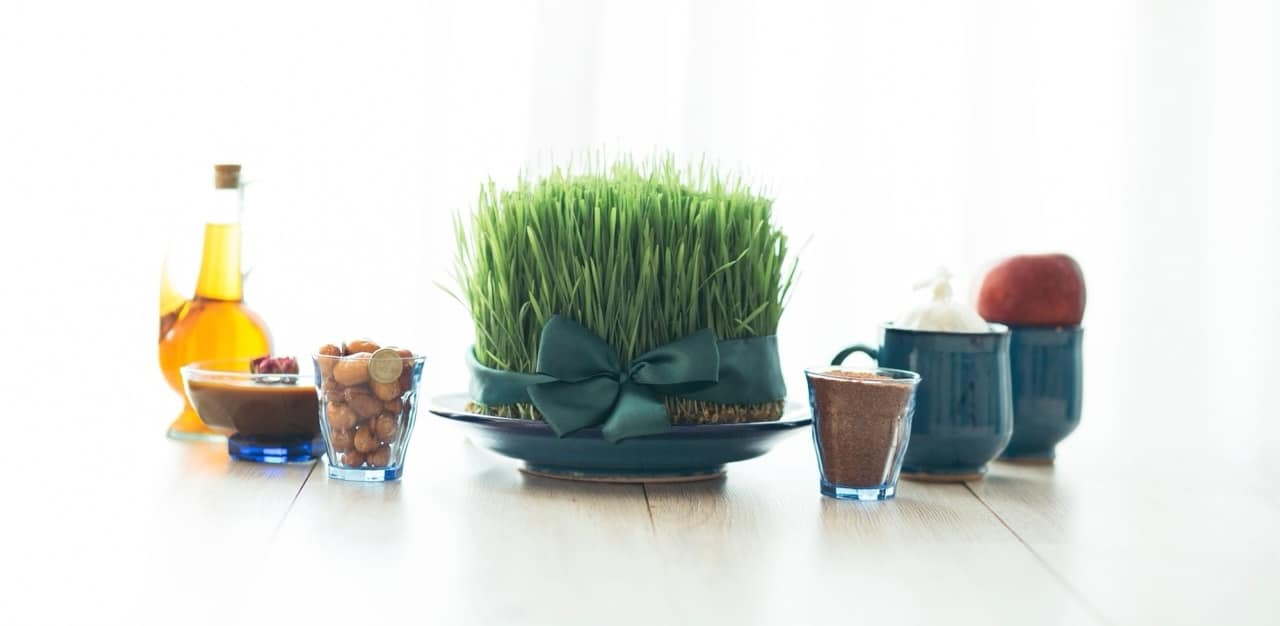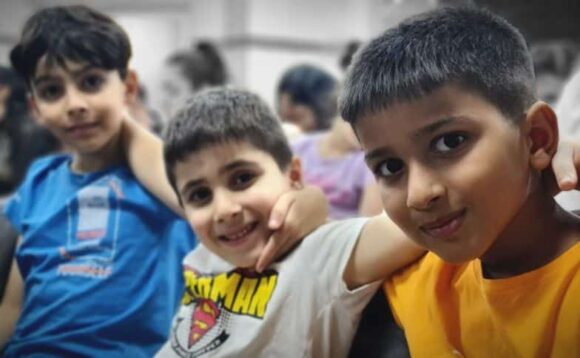
Iranian New Year and the Haft Seen
While most of the world mark their new year in January, Iranians mark it on the first day of Spring (around the third week of March). The emphasis on new life and new beginnings is strong. Nowruz (pronounced no-rooz) literally means ‘New Day’ and it marks the first day of the New Year.
For centuries, Iranians have symbolized the New Year (Nowruz) with beautiful displays (Haft Seen) of specially selected objects that represent their hopes and values for the year ahead – health, love, prosperity, wisdom, rebirth, etc. Iranian New Year (or Persian New Year) is a real high point in the year. But what is the Haft Seen and what does it signify?

This tradition predates Islam in Iran.
Before Iran was Islamized in the seventh century, the new year was marked with a display of seven symbolic objects beginning with the letter ‘sh’ in the ‘haft sheen’ (haft=seven, sheen=letter sh). The number seven represented and preserved the “Seven Eternal Laws” from the teachings of Zarathushtra (founder of Zoroastrianism). Wine (sharab) was the main element.
With Iranians converting to Islam, wine was no longer suitable for the Nowruz table because alcohol is not permitted in Islam. The wine (sharab) was replaced with vinegar (serkeh) and in order to maintain the poetry of the table, the rest of the items were also replaced with elements beginning with the letter ‘s’. And so, the haft-sheen became today’s haft-seen (or haft-sin).
Get our newsletter
Stay up to date with what God is doing in Iran today! Get the latest prayer points, project advancements, and opportunities to get involved.
In its original intention, the symbols break down into three each from the material world of nature (or “donyaheh mahdoodiat”) and the immaterial world of meaning and ideas (or “donayeh maanah”), and one that ties these two worlds together. Iranian families take great pains to create a beautiful haft-seen table each year.
Historically, the items would be displayed on a mantel or a specially designed fabric on the floor, which would be called a “sofreh”. Today, most people prefer to set up a table instead. Even if the placement has changed, the haft-seen is still generally referred to as “sofreh haft-seen” and much of its decorative elements will be passed down from generation to generation – similar to how Christmas decorations and traditions are passed down in the West. The traditional Nowruz holiday will last 13 days and the haft-seen will be set throughout that time.
The primary elements of the haft-seen are:
Sabzeh – wheat, barley, or lentil sprouts grown in a dish – symbolizes rebirth, renewal and growth
Samanu – sweet wheat germ pudding – symbolizes sweetness of life and fertility
Senjed – oleaster (flower of the lotus tree, often displayed dried) – symbolizes love and affection
Serkeh – vinegar – symbolizes age and patience
Seeb – apple – symbolizes beauty and health
Seer – garlic – symbolizes health and medicine
Somagh – sumac berries – symbolizes new beginnings (color of sunrise) and the spice of life
Other elements can also be used or substituted, including:
Sekkeh – coins – symbolizes wealth and prosperity
Sombol – hyacinth flower – symbolizes Spring and renewal
Sa’at – clock – symbolizes – symbolizes long life
More recently, even elements that don’t start with an ‘s’ can be included such as a book of wisdom (wisdom and faith), mirror (reflection/self-reflection), candles (light and happiness), painted eggs (fertility), goldfish (movement, life and the flow of time) and Iranian confectionary (sweetness and joy).
This March, take time to pray for Iranians as they mark the beginning of a New Year. Pray for them as they carefully and lovingly lay out each element of the haft-seen, celebrating and ushering in new beginnings, joy, love, health, prosperity and life.
“I have come that they may have life, and have it to the full.” Jesus’ words from John 10:10

Donate Today
